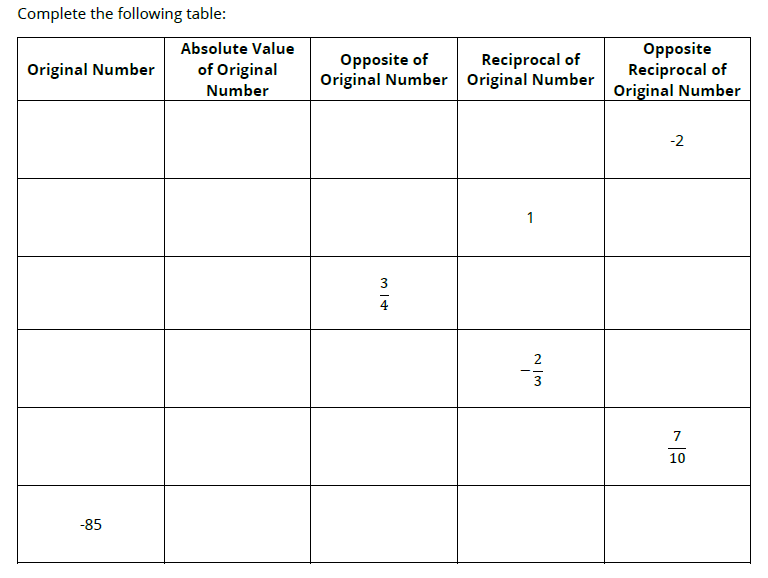Roll a Number Dice Activity for Practicing Absolute Value, Opposite, Reciprocal, and Opposite Reciprocal
This blog post contains Amazon affiliate links. As an Amazon Associate, I earn a small commission from qualifying purchases.
I think I’m almost finally done sharing activities to review absolute value, opposite, reciprocal, and opposite reciprocal. This was a new skill addition this year, so I had to start from scratch with making review activities!

To understand my rationale for this activity, you kinda need to know what my SBG quiz for this skill looked like. The quiz was in two sections. Here’s the first section:

I decided I wanted students to practice this, but I didn’t want to just give them practice problems. I wanted them to roll dice to determine their practice problems.

So, I set to making stuff to make this happen.
I created dice templates for students to lay their rolled dice on to form numbers.

Next, I created a 11 x 17 template that I decided to call “Roll a Number.” I printed each template on 11 x 17 card stock and slid it in an 11 x 17 dry erase pocket.
MATH = LOVE RECOMMENDS…

I cannot imagine teaching math without my dry erase pockets! They instantly make any activity more engaging and save me countless hours at the copy machine since I can use the same class sets of copies year after year.
Here are my current go-to recommendations:
If you are looking to save a bit of money, you can also pick up a package of 11 x 17 sheet protectors for a much cheaper price! They won’t be quite as durable, but students can still write and erase with their dry erase markers.

Once each group had a dry erase template, dice, and deck of roll a number cards, it was time to start.
Roll a die. This will determine which box you will start with.

Set your die on the appropriate number so your teacher can more easily check your work later!

Flip over the top card from your deck of dice/number cards.

Place this card in the cell of the table that corresponds to the number you rolled on the die earlier. If students rolled a six, I got to choose one for them!

The number of boxes on your card tells you the number of additional dice that must be rolled. In my case, two!

Place the dice in the empty boxes to form a number.

If you weren’t lucky enough to roll a 1 and get the original number, it’s now time to figure out the original number. Be careful here. If you mess this up, there’s a good chance you’ll mess up the entire problem!

Now that I know the original number, I can easily find the absolute value!

I can also find the reciprocal.

And the opposite reciprocal.

Once the boxes are all filled out, it’s time to raise your hand and have your teacher check your answers.
There is one flaw in the activity that I did have to warn students about. It is possible to roll a 2 for absolute value and draw a negative dice card. Eek!

We talked about this possibility and the importance of changing the card to a positive (easy thanks to lamination)!

This activity gave my students lots of practice and led to lots of great conversations. There were many misconceptions that ended up surfacing that had to be dealt with.
Here are some action shots:















Roll a Number Activity Files
Click here to SAVE the file to your device.
Roll a Number Cards (PDF)
1436 saves – 161.00 KB







Do you have one that +-X and divides these rational numbers? We are doing that now in sixth grade. They are subtracting negative fractions and needing some practice. I would rather not use a worksheet though.
This is fantastic! It really gets them to think about the relationships of the numbers. Just wondering, how do you fix student misconceptions? My entire eighth grade algebra class came in with. a misconception that parentheses don't matter when raising a negative number to an exponent! I used an entire class period to try to fix it, and I think I only reached maybe half of them :(…
You showed us the first section of your assessment. Are you willing to show us the second sections? Thank you.
I love this activity. In fact, kids are mixed up between the concept of reciprocal and opposite. I created game on Kahoot, but not enough! This activity is to strengthen the concepts of those key terms. Kids are able to deepen the understanding the relationship between the terms as absolute value, inverse, opposite, reciprocal, and opposite reciprocal.